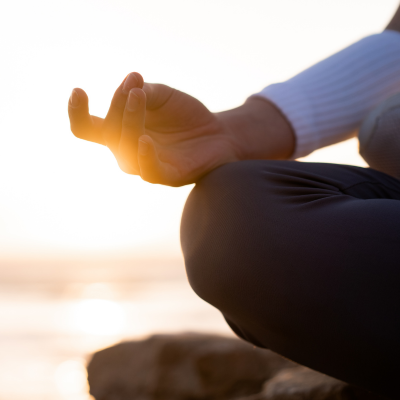Unlocking Inner Peace: Trending Mindfulness Applications for Mental Wellbeing
Finding inner peace can feel like a luxury in today's fast-paced world. However, with the help of mindfulness applications, online therapy for individuals, and personalized practices like mindfulness coaching, it's becoming more accessible than ever. In this blog, we'll delve into mindfulness, from meditation apps to parenting tips in the digital age.
We'll also explore mindful movement practices and the powerful benefits of Mindfulness-Based Stress Reduction (MBSR). But that's not all! We'll take a moment to reflect on what inner peace truly feels like and how to recognize it in our daily lives.
Mindfulness Meditation Apps: Your Pocket-Sized Path to Tranquility
In today's digital age, finding moments of peace can be challenging. That's where mindfulness meditation apps come in. These user-friendly applications bring the power of meditation to your fingertips, allowing you to embark on a journey of self-discovery and tranquility. For individuals seeking deeper self-awareness, combining these apps with mindfulness coaching provides personalized strategies to enhance mental well-being.
Parenting in the Digital Age: Nurturing Mindful Families in a Digital World
In a world dominated by screens, parenting with mindfulness has never been more important. It’s about finding a balance between technology and genuine human connection. Here are some practical tips:
Tech-Free Zones: Designate specific areas in your home as tech-free zones, like the dining room or bedrooms. This creates spaces for uninterrupted family time.
Set Boundaries: Establish clear screen time rules for parents and children. This helps foster healthy habits and reduce dependency on digital devices.
Lead by Example: Be a mindful role model by demonstrating balanced tech use and engaging in quality face-to-face interactions.
Quality Time: Dedicate moments for undivided attention with your children. Engage in activities that encourage bonding, such as reading, playing games, or going for walks.
By integrating these practices, you can create an environment that nurtures mindfulness within your family, fostering stronger connections and a sense of harmony. Mindfulness coaching for parents can also provide additional tools to strengthen these mindful parenting skills.
Connecting Body and Mind for Lasting Serenity
Mindful movement practices offer a holistic approach to achieving inner peace. They emphasize the connection between body and mind, promoting a sense of tranquility and balance. Here are a few practices to consider:
Yoga: This ancient practice combines physical postures, breathing exercises, and meditation techniques. It helps improve flexibility, strength, and mental clarity.
Tai Chi: Known as "meditation in motion," Tai Chi involves slow, flowing movements that promote relaxation, balance, and a sense of inner calm.
Qigong: Like Tai Chi, Qigong emphasizes gentle movements, deep breathing, and mindfulness. It is believed to promote energy flow and overall well-being.
These practices align perfectly with the goals of online therapy for individuals seeking physical and mental balance. It offers tools to navigate stress and promote long-term well-being.
Mindfulness-Based Stress Reduction (MBSR): Embracing a Proven Path to Inner Harmony
Mindfulness-Based Stress Reduction (MBSR) is a structured program that combines mindfulness meditation, body awareness, and yoga to help individuals manage stress and cultivate a greater sense of well-being. Developed by Jon Kabat-Zinn, MBSR has gained widespread recognition for its effectiveness in reducing stress-related symptoms and enhancing overall quality of life.
Benefits of MBSR:
Reduced Stress Levels: MBSR has been shown to significantly reduce stress and anxiety, leading to improved mental and emotional well-being.
Enhanced Resilience: Participants often report increased resilience in difficult circumstances and a greater ability to cope with challenges.
Improved Physical Health: Studies suggest that MBSR can positively affect various physical conditions, such as chronic pain, high blood pressure, and insomnia.
Incorporating online therapy with MBSR practices offers an opportunity to integrate these transformative tools into daily life, further supporting emotional growth and balance.
Recognizing Inner Peace: Tuning into the Symphony of Serenity
Inner peace is not just an abstract concept; it's a tangible and profound sensation that manifests in various ways. Here's how you can recognize it:
A Calm Mind:
Inner peace often accompanies a quiet mind, free from the constant chatter of worries and anxieties. It's a state where thoughts flow gently, like a calm river.Physical Relaxation:
Your body feels at ease, with relaxed muscles and a sense of lightness. Tension dissipates, and you may notice a softening in your posture.Emotional Equanimity:
Even amid challenges, you feel a deep sense of tranquility. Emotions may still arise, but they don't overpower or control you.Clarity and Presence:
You're fully engaged in the present without dwelling on the past or fretting about the future. This heightened awareness brings a sense of clarity.A Feeling of Connection:
Inner peace often brings a profound sense of connection, whether with nature, others, or a deeper aspect of yourself.
Recognizing these signs of inner peace allows you to interrupt patterns, behaviors, and dynamics contributing to discomfort and inauthenticity. By acknowledging and nurturing these moments, you give space for the sensation of inner peace to grow and expand, both internally and in the choices you make in response to your environment.
In the hustle and bustle of modern life, the pursuit of inner peace is more important than ever. Online therapy for individuals and mindfulness coaching provide valuable support for those seeking to cultivate a sense of calm and balance. Through mindfulness practices and applications, we have powerful tools to navigate life’s challenges gracefully and authentically, allowing inner peace to flourish and positively influence our environment.
By understanding inner peace, we can navigate life's challenges with grace and authenticity, allowing our inner peace to flourish and positively influence our environment.






